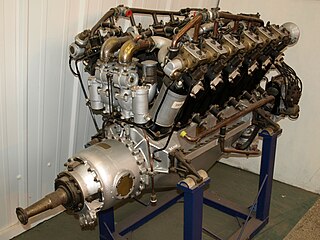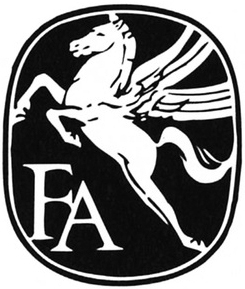
Curtiss Aeroplane and Motor Company was an American aircraft manufacturer formed in 1916 by Glenn Hammond Curtiss. After significant commercial success in the 'teens and 20s, it merged with the Wright Aeronautical in 1929 to form Curtiss-Wright Corporation.

The Curtiss Falcon was a family of military biplane aircraft built by the American aircraft manufacturer Curtiss Aeroplane and Motor Company during the 1920s. Most saw service as part of the United States Army Air Corps as observation aircraft with the designations O-1 and O-11, or as the attack aircraft designated the A-3 Falcon.

The Curtiss SB2C Helldiver, also known as the Curtiss A-25 Shrike, was a dive bomber developed by Curtiss-Wright during World War II. As a carrier-based bomber with the United States Navy (USN), in Pacific theaters, it supplemented and replaced the Douglas SBD Dauntless. A few survivors are extant.

The Rolls-Royce Olympus was the world's first two-spool axial-flow turbojet aircraft engine design, dating from November 1946, although not the first to run or enter service. It was originally developed and produced by Bristol Aero Engines. First running in 1950, its initial use was as the powerplant of the Avro Vulcan V bomber. The design was further developed for supersonic performance as part of the BAC TSR-2 programme. Later it saw production as the Rolls-Royce/Snecma Olympus 593, the powerplant for Concorde SST. Versions of the engine were licensed to Curtiss-Wright in the US as the TJ-32 or J67 and the TJ-38 'Zephyr'. The Olympus was also developed with success as marine and industrial gas turbines.

The Bristol F.2 Fighter was a British two-seat biplane fighter and reconnaissance aircraft of the First World War developed by Frank Barnwell at the Bristol Aeroplane Company. It is often simply called the Bristol Fighter, other popular names include the "Brisfit" or "Biff".

The Curtiss F11C Goshawk was a 1930s United States naval biplane fighter aircraft that saw limited success but was part of a long line of Curtiss Hawk airplanes built by the Curtiss Aeroplane and Motor Company for the American military.

The Curtiss XA-14 was a 1930s United States airplane, the first multi-engine attack aircraft tested by the United States Army Air Corps. Carrying a crew of two, it was as fast as the standard pursuit aircraft in service at the time.

The Rolls-Royce Falcon is an aero engine developed in 1915. It was a smaller version of the Rolls-Royce Eagle, a liquid-cooled V-12 of 867 cu in capacity. Fitted to many British World War I-era aircraft, production ceased in 1927. The Falcon was designed by R.W. Harvey-Bailey.

Fairchild Aircraft Ltd. was an aircraft manufacturer active at Longueuil, Quebec, Canada in the period 1920–50. It served as a subsidiary of the Fairchild Aircraft company of the United States.

The Curtiss Models F made up a family of early flying boats developed in the United States in the years leading up to World War I. Widely produced, Model Fs saw service with the United States Navy under the designations C-2 through C-5, later reclassified to AB-2 through AB-5. Several examples were exported to Russia, and the type was built under license in Italy.

The Bristol Badger was designed to meet a British need for a two-seat fighter-reconnaissance aeroplane at the end of World War I. Despite the 1918 Armistice, three Badgers were delivered to the Air Board to develop air-cooled radial engines, particularly that which became the Bristol Jupiter; two other Badgers were also built.
This page is based on this
Wikipedia article Text is available under the
CC BY-SA 4.0 license; additional terms may apply.
Images, videos and audio are available under their respective licenses.










